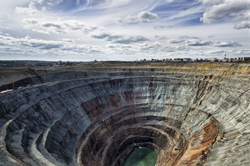Life cycle analysis for mineral extraction
The EU-funded LICYMIN project developed and validated a full Life cycle assessment (LCA) for the extraction industry, which involved a 'cradle-to-grave' analysis of all associated mining activities. The project was the first time a holistic LCA for the extractive industries had been developed. The assessment included the exploration of the mineral deposit, its exploitation, the disposal of waste, remediation and the long-term environmental monitoring and control of impacts from mining. Project partners from the Imperial College London created definitions for the LCA system for mineral extraction. The team began by dividing the study area into two. The first part comprised the system where mining activities take place. The second part was the area surrounding the system, known as the system environment. The mining system was further divided into four main subsystems which included production, processing, waste disposal and rehabilitation and maintenance. The mining activities of the system were broken down into phases, processes and functional units. Researchers studied the inputs into the system which were energy, materials and costs. Outputs included product, solid waste and discharges to the air, surface and groundwater. Inputs and outputs were identified for each functional unit and the information gained contributed to an LCA model. The model enabled mining activities to be undertaken in a more cost-effective and environmentally responsible way. The model also allowed industry, local communities and regulating authorities to assess the life cycle impacts of mining activity by identifying particular emissions. This information can be passed to internal or external decision makers, thereby ensuring the correct action is taken. In this way, the production of waste and the use of resources can be minimised. Furthermore, the modelling tools developed by LICYMIN can be applied to any mining operation in the world.







